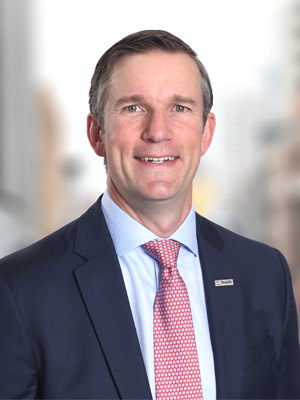Stories
Chief investment officer provides 2024 investment outlook
Eric Freedman talks about what his team is focused on, what will happen with interest rates and where investors should be putting their money now

The past year has been an interesting one in the markets and in the economy. Despite three interest-rate increases (on the heels of seven rate increases in 2022), high prices on just about everything and the resumption of student-loan payments, consumers and businesses continued to spend, the labor market remained strong, and stocks had some of their best months of the year in November and December.
Eric Freedman, chief investment officer for U.S. Bank, talks about what’s on tap for 2024.
What are you watching going into 2024?
We’re focused on three key interrelated things: where interest rates will go, inflation’s trajectory, and spending trends for businesses and consumers.
2023 was a pretty good year for the markets – better than expected. Why do you think that was, and do you expect that momentum to continue this year?
Resilient consumers continued to spend in 2023, driving markets and lifting corporate profits. It’s not what you would expect with high borrowing costs, U.S. mortgage rates exceeding 7%, high energy costs and student-loan payments resuming. But the labor market was strong, unemployment was low and wage growth exceeded 4%.
Market performance this year will hinge on consumer and business spending given the impact of higher interest rates.
U.S. consumers have continued to spend despite higher rates on mortgages, auto and personal loans, and credit cards. Why do you think that is?
There are several factors at play here. First, the job market was abnormally strong in 2023; at one point, for every person seeking a job, two jobs were available. As a result, companies had to be more competitive to attract limited talent, and wage growth ticked up. At the same time, consumers still had ample cash from pandemic-era savings, and many have low mortgage rates attached to rising home values, which helps drive spending.
We see interest rates like the ramp on a treadmill; the longer the ramp remains elevated, the more likely the runner (consumers and businesses) will slow down. Although the Fed’s 11 interest rate hikes take time to manifest into the economy, we are seeing some signs that consumers are feeling the pinch.
Affluent and middle-income consumers continue to spend, particularly on travel and entertainment, while lower-income groups are showing signs of financial stress, spending mostly on essentials.
When do you think consumer spending will slow? Are we in for a big fall?
We don’t think consumer spending will stop abruptly, but instead will slow gradually as high interest rates, a tightening labor market and diminished savings weigh on activity.
Our U.S. Bank Economics Team believes the U.S. economy will likely avoid a recession as the labor market remains relatively strong and as resilient consumers and businesses adapt to higher borrowing costs.
When do you think the Fed will start to cut interest rates? What does it need to see to make that decision?
The Fed’s battle against inflation has been a major economic story for the past two years, and it will be key again in 2024. While we do think the Fed is done hiking rates, a lot of people think the Fed will start cutting rates as soon as the first quarter. We think that’s premature based on the data we evaluate. The economy is still seeing pressure from inflation, both in the U.S. and abroad. The Fed’s rate-hike campaign is cooling the economy: consumer and business spending is slowing, the job market is slowing but solid, and wage growth has come down. But we believe the Fed needs more evidence that inflation is returning to its 2% target before it begins cutting interest rates.
Where should investors be putting their money now?
We still see opportunities in the technology sector despite strong performance in 2023. Fast is getting faster, and speed, scale and efficiencies do not occur without technology. We are favorable on artificial intelligence, cloud computing, software and data security. Over time, we are also believers in health care as a sector that will benefit from the secular trend of an aging population. We also see opportunities for sectors that did not do as well in 2023 to start to gain favor with investors, especially those that will benefit from lower interest rates. Within the bond market, we like credit-sensitive opportunities based on our view that the consumer will remain resilient.
Will the upcoming Presidential election have any impact on the markets?
We don’t think that investors will turn their attention toward the election until the middle of the year as candidates and key issues emerge. Our analysis indicates market returns historically depend more upon the economy’s path rather than election outcomes.
Take a deeper dive into the markets and economy in the U.S. Bank 2024 investment outlook.
More stories
Media center
Press contact information, latest news and more
Learn more
Company facts, history, leadership and more
Work for U.S. Bank
Explore job opportunities based on your skills and location
